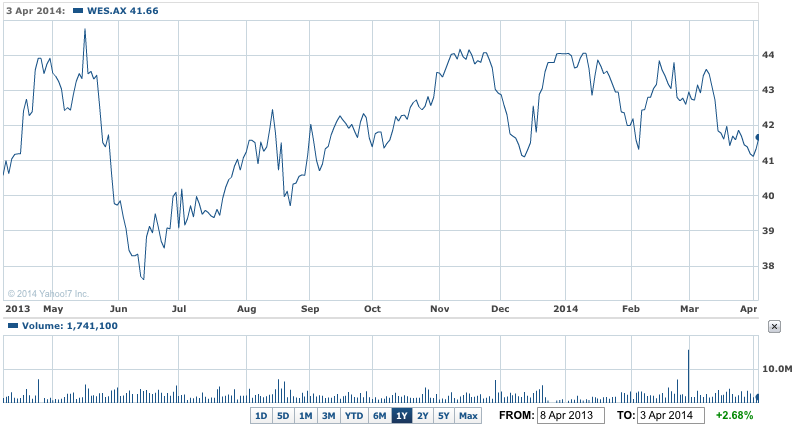The chances are rising that shareholders in Wesfarmers (WES) will be in line for some sort of capital management move, including a substantial buyback, after the company yesterday completed selling its insurance businesses for a total of $3 billion.
The company has already sold its insurance underwriting business to Insurance Australia Group (IAG) for more than $1.8 billion.
Yesterday it revealed it had raised more than $1.15 billion in selling its insurance broking and premium funding subsidiaries to global broker, Arthur J. Gallagher.
Gallagher is based in the US mid western state of Illinois.
As impressive as the dollar amount was, the news failed to excite investors – Wesfarmer’s shares only rose 1.2% to $42.08 by the end of trading yesterday.
The latest sale will include the OAMPS business in Australia and the UK, and Crombie Lockwood in New Zealand.
All up the company will gross a profit of around $1 billion from the two sales.
The premium funding operations comprise Lumley Finance and Monument Premium Funding in Australia and New Zealand.
In addition to the $1.010 billion for the broking operations, it will be paid $150 million to repay funding of the premium funding operations.
The deal with Insurance Australia Group was announced last December and IAG received the green light last month from the competition regulator for the $1.84 billion deal.
The two sales will see Wesfarmers leave the insurance industry completely. Wesfarmers expect to post pre-tax proceeds of around $3 billion, and a pre-tax profit of around $1.01 billion to $1.085 billion from the deal.
The sale of the broking and premium funding businesses is subject to regulatory approval.
WES 1Y – Wesfarmers: Insurance sale raises $3 billion, what will be done with it?

Wesfarmers CEO Richard Goyder said in a statement the sale was "in the best interest of our shareholders while offering the customers and employees of our insurance broking and premium funding businesses the opportunity to join a leading global insurance broking company with ambitions to expand in Australia and New Zealand".
"I thank all teams in the Insurance division for their outstanding efforts in growing and improving their businesses under Wesfarmers ownership and, most recently, for their continuing focus and dedication during the processes involved with transition to new ownership," he said.
But he said nothing about what the company can do with the money.
It had $4.675 billion in debt at the end of December and $1.102 billion in cash reserves.
But with interest rates at ultra low levels, it makes no sense to repay the debt and de-gear what is already an undergeared balance sheet. Wesfarmers had around $47 billion in assets before the insurance sales.
So a buyback seems more likely.
But nothing will happen until both deals have passed all the necessary approvals.
Wesfarmers carried out a 50c a share capital return late last year and consolidation of its two classes of shares into one.
The latest sale is subject to a number of conditions precedent including obtaining approvals from the Foreign Investment Review Board in Australia, Overseas Investment Office in New Zealand and the Financial Conduct Authority in the UK.
"Achieving satisfaction of the conditions precedent is expected to take several months," Wesfarmers said yesterday, meaning a decision on what to do with the money will probably have to wait until August when the full year figures are released.
Wesfarmers could spend the money on a major acquisition, but many investors would not support that as they want the company to boost returns and raise its return on equity back to pre 2007 levels.
It was a moderately performing industrial products division. Some analysts reckon it could snap up the chemicals business of Orica.













